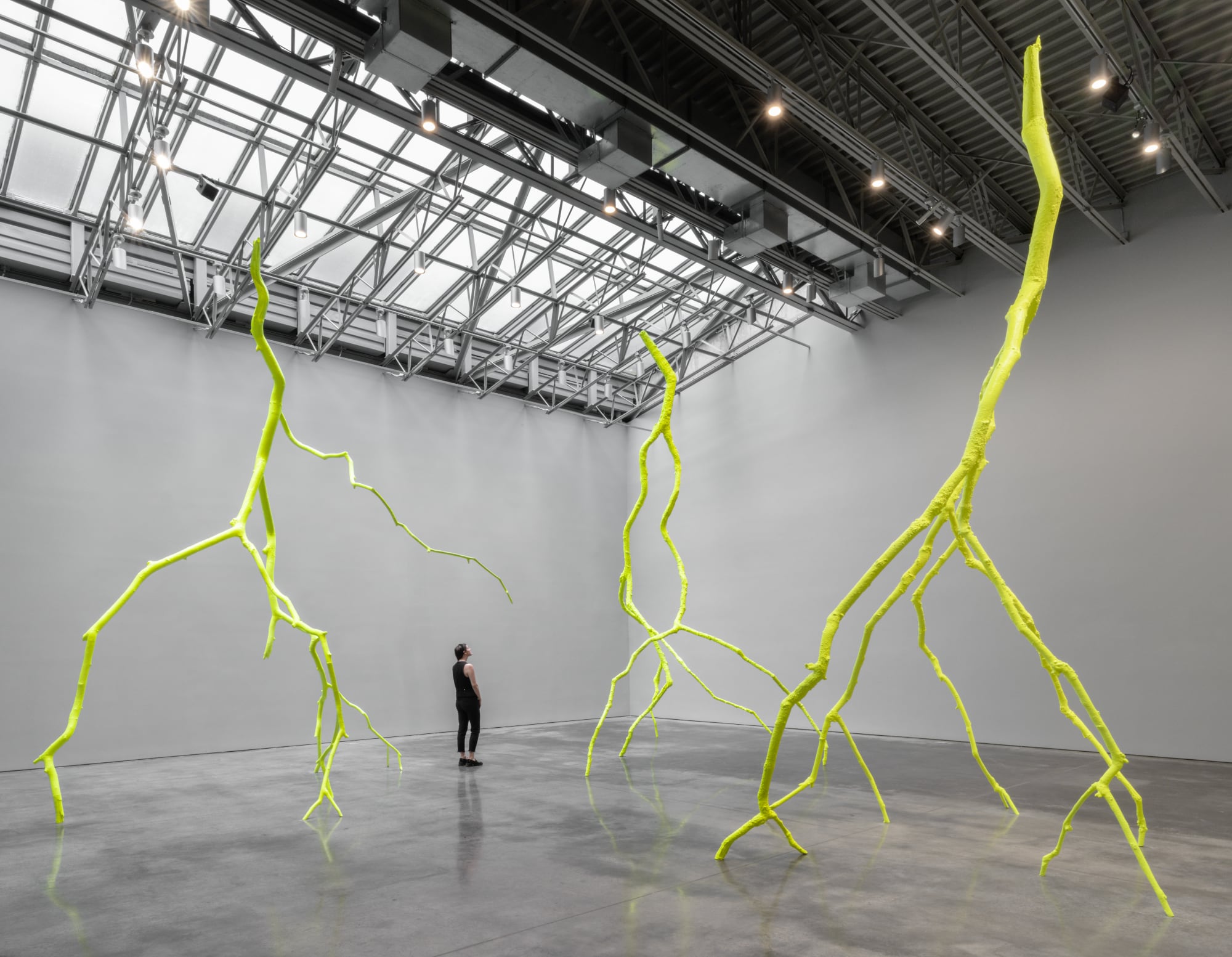“Blankets” (2023), Chengdu, China. All images © SpY
From hundreds of metallic emergency blankets suspended from a gallery ceiling to a series of giant inner tubes that engulf an entire room, SpY’s monumental kinetic installations (previously) invite viewers to lose themselves in kinetic choreography and dramatic lighting. In both “Zeros” and “Eclypses,” for example, bold, black shapes are cast in red light, dwarfing the visitor as the forms slowly sway. Many of the works require the viewer to activate them by moving through the middle or interacting with various passageways and perspectives.
In “Orb,” SpY interpreted the surrounding landscape of Egypt and its rich history by literally reflecting the present moment using an ancient design technique. The artist incorporated the concealed geometry within pyramids using pi, which can be found when dividing the perimeter of a structure by twice its height. He says, “The sphere is an invisible part of the resulting geometry, since a sphere with a radius as high as the pyramid would have a circumference very close in length to the pyramid’s perimeter.”
SpY is known for utilizing utilitarian materials like scaffolding or barrier tape, reframing the context of objects that are often loaded with meaning. In Amsterdam, the artist draped thousands of strips of red-and-white striped tape over a public walkway, contradicting its purposes as a barrier and inviting visitors to wander through a patterned forest. A through line of his practice explores “stark conceptual contrasts between the aesthetics of his artworks and the difficult connotations of the objects they are built with—often elements used to condition people’s behaviour,” says a statement.
Discover more of SpY’s work on the artist’s website and Instagram.
“Zeros” (2023), Beijing, China
“Orb” (2022), Cairo, Egypt
“Eclypses” (2022), Oviedo, Spain
“Eclypses” in daylight
“Barrier Tape” (2022), Amsterdam, The Netherlands
“Barrier Tape”
“Barrier Tape”
Do stories and artists like this matter to you? Become a Colossal Member today and support independent arts publishing for as little as $5 per month. The article SpY Challenges Perceptions in Monumental Installations That Reframe Everyday Objects and Historical Sites appeared first on Colossal.


